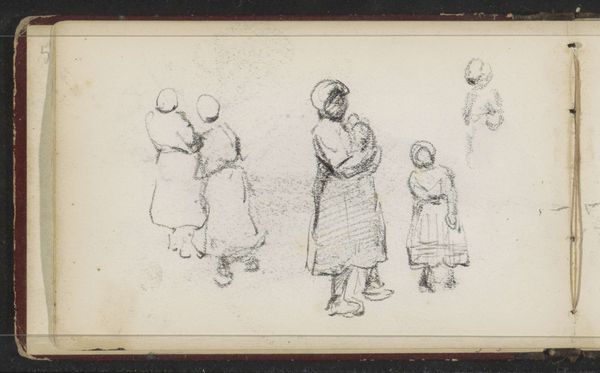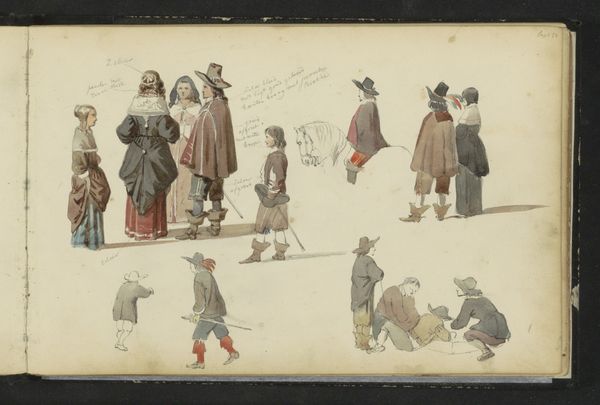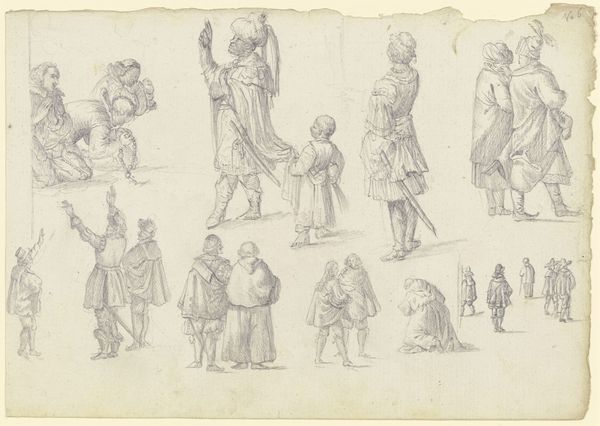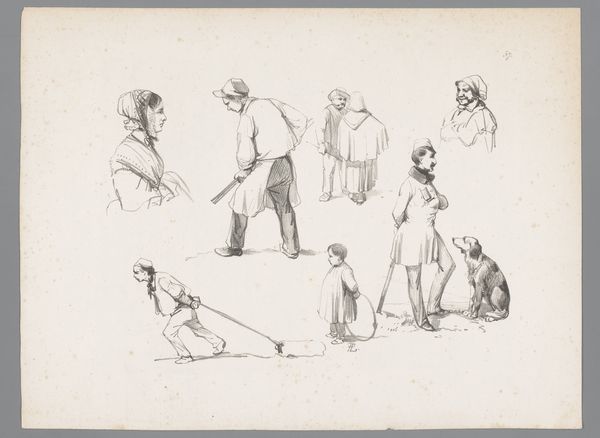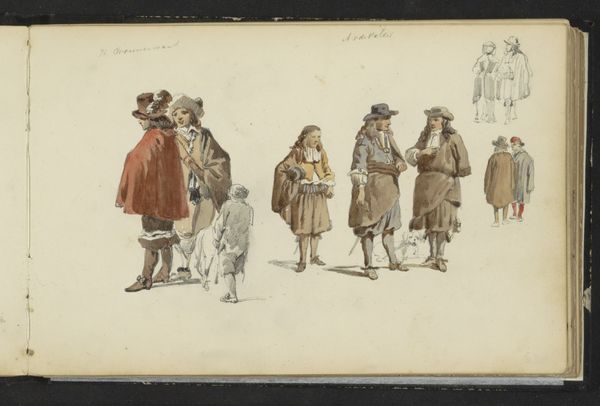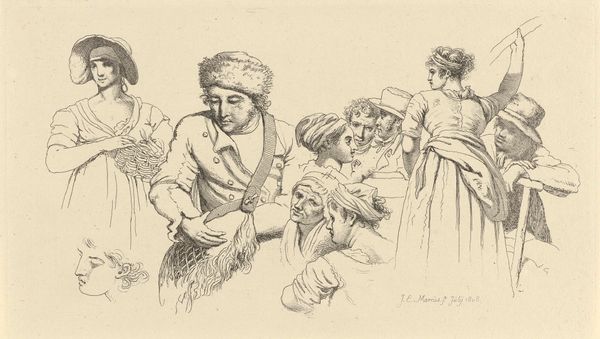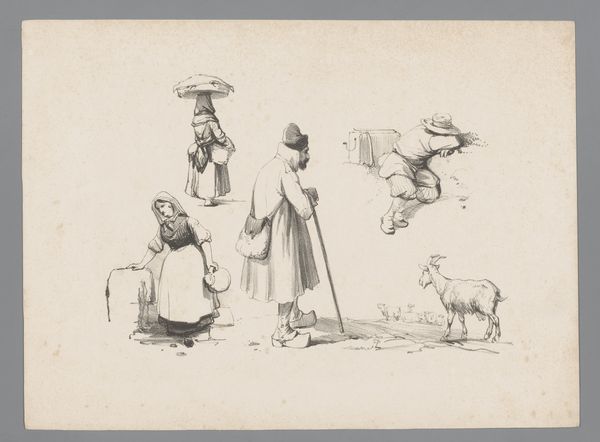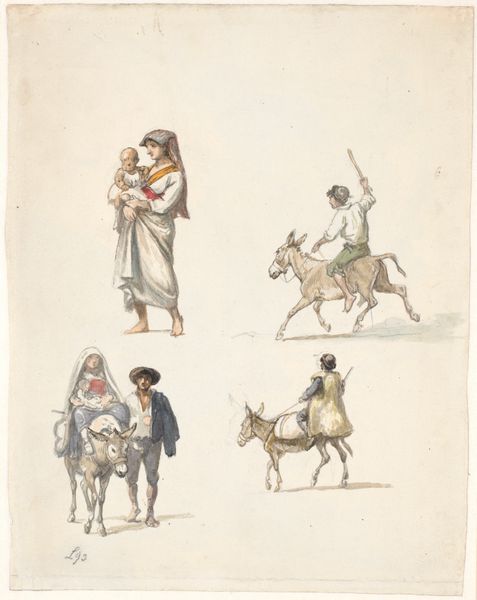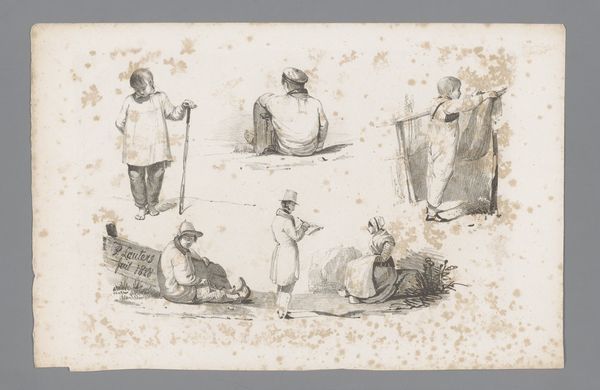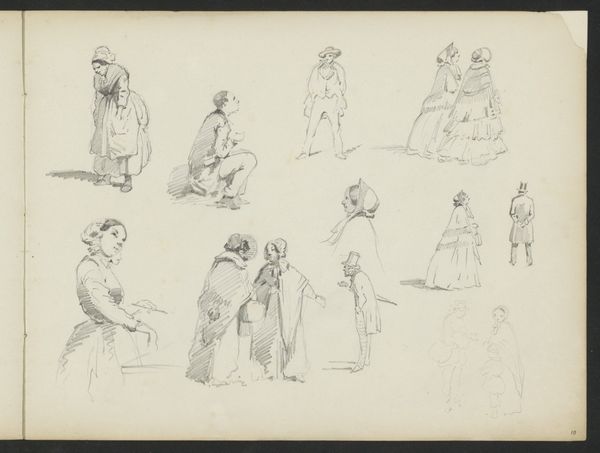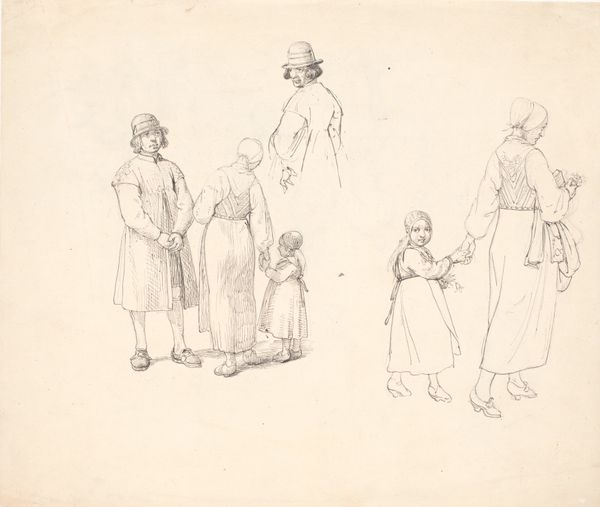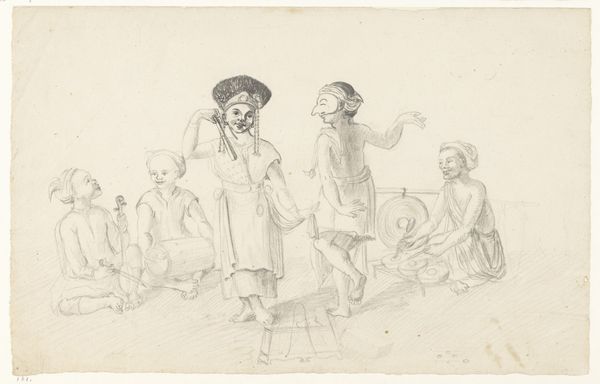
drawing, coloured-pencil, print, plein-air, paper, ink, pencil, graphite
#
portrait
#
drawing
#
coloured-pencil
# print
#
impressionism
#
plein-air
#
landscape
#
figuration
#
paper
#
ink
#
coloured pencil
#
england
#
pencil
#
graphite
#
genre-painting
Dimensions: 254 × 353 mm
Copyright: Public Domain
Editor: Here we have “Sketches of Peasants in Boulogne” by Frederick Christian Lewis, created around 1868. It’s a drawing done with graphite, ink and colored pencil on paper, currently at the Art Institute of Chicago. I’m immediately struck by how each figure seems caught in a candid moment, a small slice of their daily lives, almost like individual icons of labor. What symbols do you find most compelling? Curator: The repetition itself becomes a potent symbol, doesn't it? Consider the baskets: Each represents sustenance, toil, connection to the land. Look closer— what do their slight variations suggest about the individuals carrying them? Is that wear and tear? Staining? These details begin to unveil personal narratives woven into the broader cultural narrative of rural life in Boulogne. Editor: That's interesting. I hadn't thought about reading the baskets as individual markers. Are there other repeating visual motifs here? Curator: Observe the head coverings. Some are simple scarves, others elaborate caps. What do these choices signal? Perhaps status within the community, adherence to tradition, or even individual self-expression within a prescribed social framework. Lewis isn't simply rendering peasants; he is subtly encoding a complex visual language. Editor: So, it’s not just a quick sketch but a deliberate construction of meaning through these repeated, yet distinct, images? Curator: Precisely. Think about how collective memory functions: fragments, repetitions, slight variations building shared understanding. Lewis captures that perfectly. He shows us the individual *and* their role within a larger, shared experience of labor and place. Do you see how those hats almost form their own symbolic syntax across the image? Editor: Yes, now that you point it out, it’s less a collection of random drawings and more like a visual lexicon of Boulogne peasantry. It really makes you consider the weight and purpose behind each detail, each sketch. Curator: Absolutely, and it illustrates how seemingly simple imagery carries cultural memory.
Comments
No comments
Be the first to comment and join the conversation on the ultimate creative platform.
